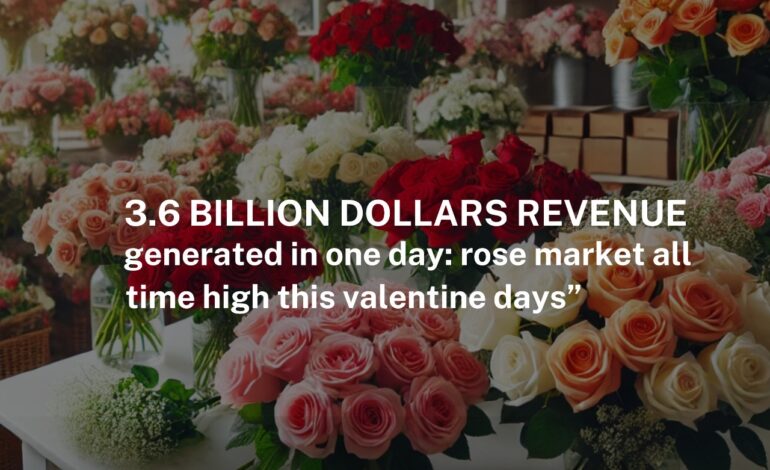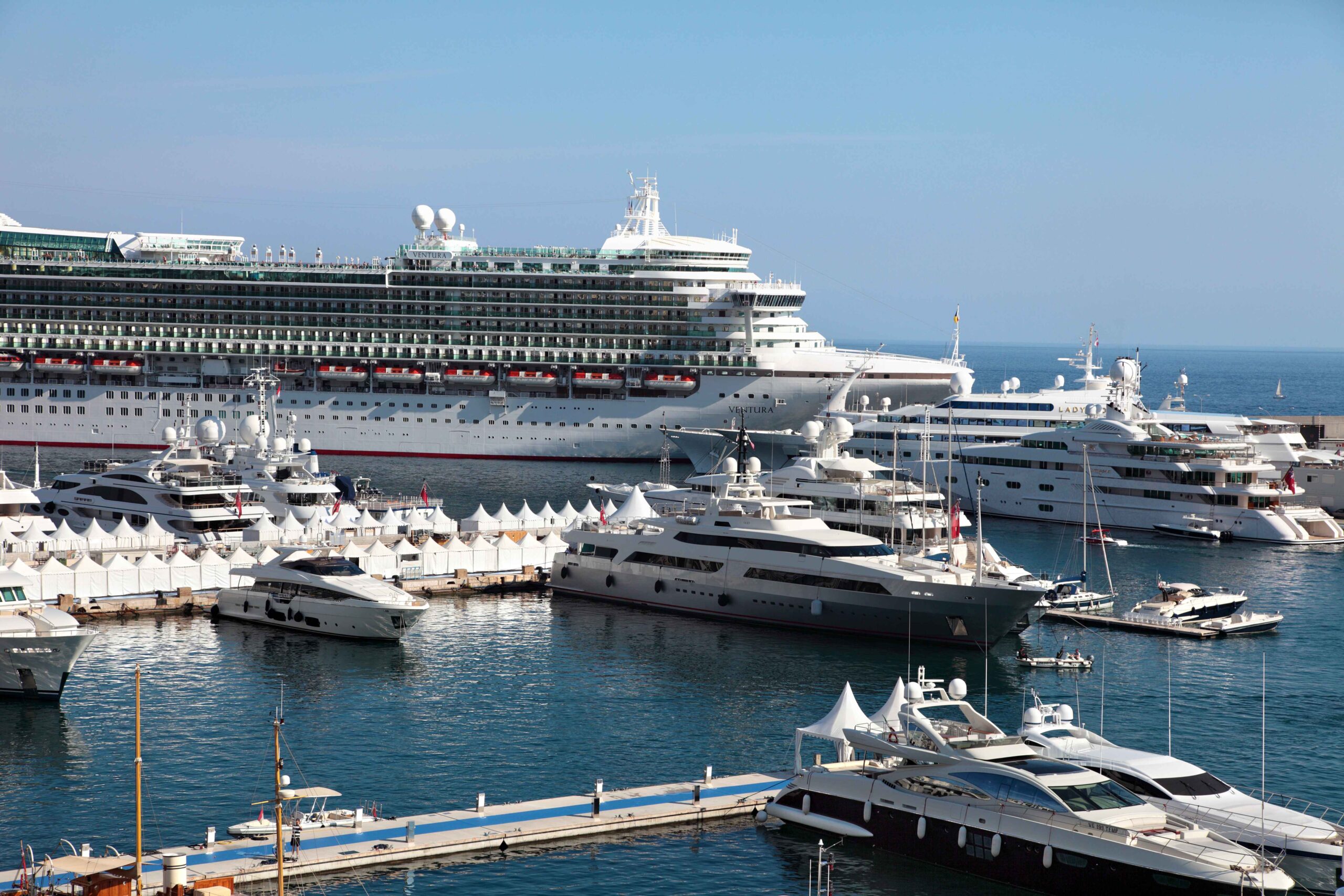Valentine’s Day, celebrated annually on February 14th, has long been associated with the exchange of roses as a symbol of love and affection. This tradition significantly boosts the floriculture industry worldwide, with notable increases in rose sales across various countries. In this article, we delve into the revenue generated from rose sales during Valentine’s Day, focusing on the United Arab Emirates (UAE), the United States of America (USA), India, and the United Kingdom (UK).
United Arab Emirates (UAE):
In the UAE, Valentine’s Day is embraced with enthusiasm, leading to a notable surge in demand for roses. While specific revenue figures for rose sales during this period are not readily available, industry reports indicate that flower prices in Dubai increased by approximately 30% in February 2024 due to heightened demand. This trend is expected to continue, suggesting a substantial market for roses during Valentine’s Day. Florists in cities like Dubai and Abu Dhabi often report increased sales, with many sourcing premium roses to cater to discerning customers. The country’s affluent population and penchant for luxury goods further contribute to the robust demand for high-quality roses during this period.
United States of America (USA):
The USA witnesses a significant uptick in rose sales during Valentine’s Day. In 2024, Valentine’s Day retail sales in the USA reached approximately $23.9 billion, with a considerable portion attributed to flower purchases. Roses remain the most popular choice, with millions of stems sold nationwide. Florists and retailers often prepare months in advance to meet the heightened demand, ensuring a steady supply of high-quality roses for consumers. While specific revenue figures for 2025 are not yet available, the trend suggests a continued strong demand for roses during this period. The National Retail Federation (NRF) reported that in 2024, 37% of consumers planned to purchase flowers for Valentine’s Day, with total spending on flowers estimated at $2.3 billion. Given the consistent popularity of roses, it is reasonable to infer that a significant portion of this expenditure is dedicated to rose purchases.
India:
In India, the celebration of Valentine’s Day has gained momentum over the years, especially among the younger population. Bengaluru, known for its favorable climate and advanced floriculture practices, becomes a hub for rose sales during this period. Starting from February 1st, an average of 600,000 roses are sold daily, with prices for single-stemmed roses increasing by 75%, from Rs 8 to Rs 14. This surge not only caters to domestic demand but also boosts export sales to countries like Europe, Malaysia, Singapore, and Sri Lanka. The domestic market itself is booming due to the wedding season, providing small growers with a safer and more profitable option. Many prefer domestic sales over exports because of logistical challenges, high freight rates, and the lack of large-scale Export Oriented Units (EOUs). In 2023, India’s total rose exports stood at ₹54 crore, with Malaysia leading the importers at over ₹10 crore, primarily sourcing from Bangalore-based growers. The UK, Australia, New Zealand, Japan, and Israel also regularly import Indian roses, though in smaller quantities. For 2025, experts predict that the market could see a 15-18% increase in overall sales, potentially reaching ₹28,500 crore (around $3.5 billion). This growth is attributed to factors such as the growing influence of social media, expansion of online shopping, and the rising popularity of Valentine’s Day among the younger generation.
United Kingdom (UK):
In the UK, Valentine’s Day is a significant event for the floriculture industry, with roses being the quintessential symbol of love. Florists experience a substantial increase in sales during this period. According to Paymentsense transaction data from 2019, florist sales increased by 510% on Valentine’s Day compared to the rest of the year. Londoners spent the most on average, with an average transaction value of £43. Liverpool residents were noted as the most consistent romantics, spending an average of £49 throughout the year. While specific revenue figures for 2025 are not yet available, this trend of increased spending on roses and other flowers is expected to continue. However, challenges such as potential price increases due to stringent EU border checks causing delays have been reported. These delays, attributed to inspections for pests on lorries carrying mixed flower consignments, could lead to supply shortages and increased costs, with a dozen roses potentially costing £50. Despite these challenges, supermarkets like Asda have prepared by stocking a record 8.1 million roses for Valentine’s Day, indicating optimism about strong sales.
Global Perspective:
Globally, Valentine’s Day significantly impacts the floriculture industry, with roses being the centerpiece of this surge. Countries with established floriculture sectors, such as the Netherlands, Colombia, and Kenya, play pivotal roles in meeting the international demand by exporting vast quantities of roses during this period. The global nature of this celebration underscores the universal appeal of roses as a timeless symbol of love and affection. In France, for instance, over 60% of the total value of flowers purchased for Valentine’s Day in 2019 were spent on roses, highlighting their enduring popularity. Similarly, in Nepal, about 350,000 units of roses were traded during Valentine’s week, generating a turnover of Rs 35 million. These examples illustrate the widespread demand for roses during this period across different cultures and economies.









